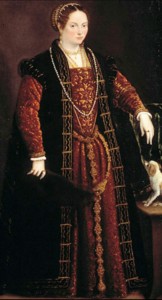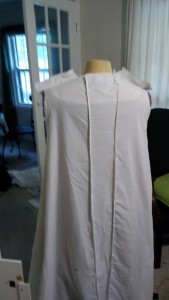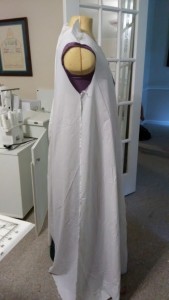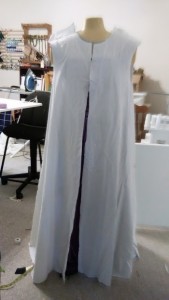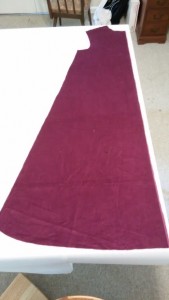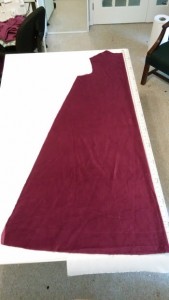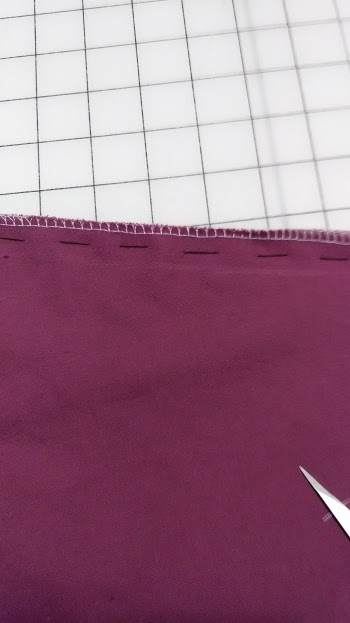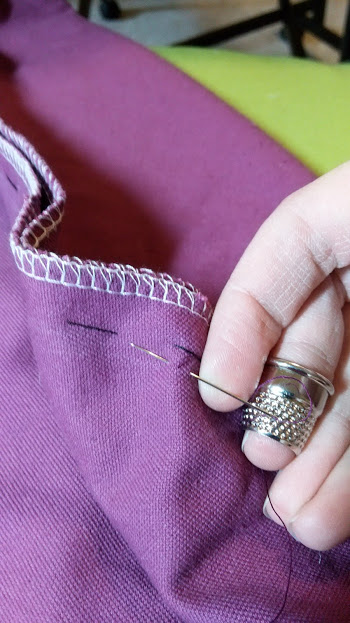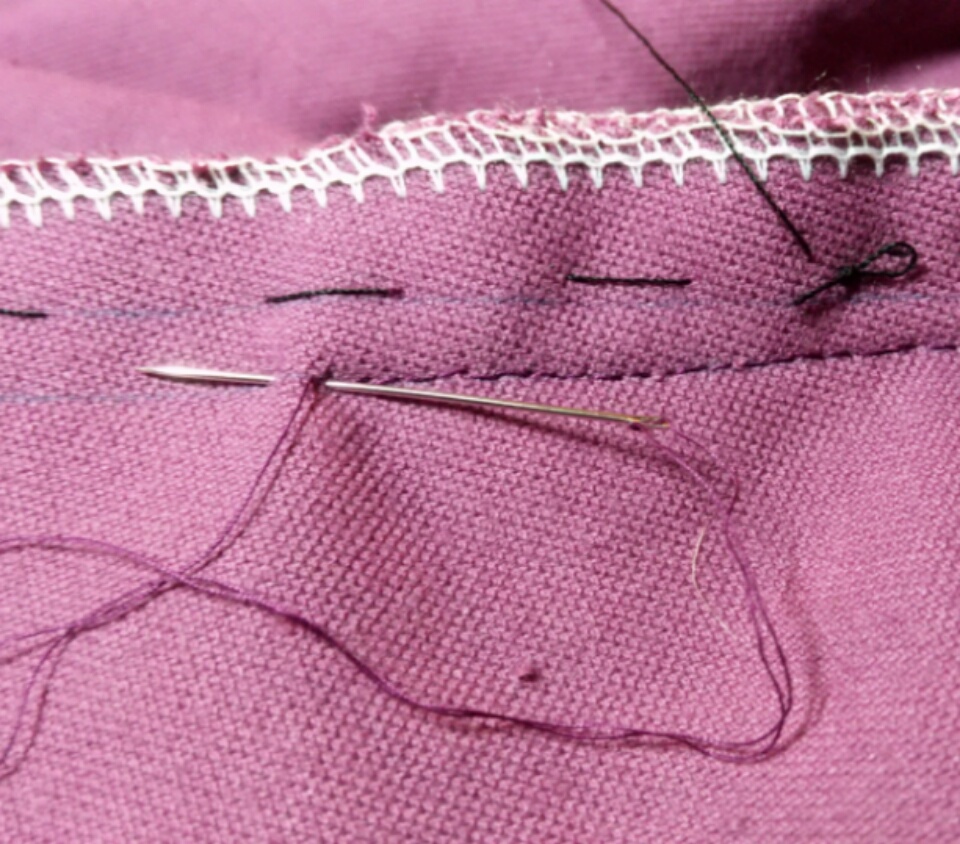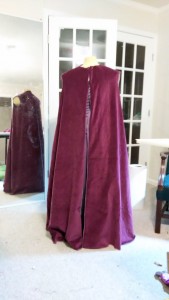The first part of the Anna project is the Zimmara, a loose gown, in place of the cloak. The dark pink fabric is cotton velveteen. It will be lined in linen and trimmed in silk satin.
My inspiration for this garment comes from this portrait by Domenico RiccioIl Brusasorci, 1567. I have never made a zimmara before so drafting was in order Juan Alcega was nice enough to provide a diagram of a loose gown in his Tailor’s Handbook, though published in 1589. The main body pieces are very close in shape to what is needed to achieve the zimmara in my inspiration picture.
I used a doublet pattern from a previous project to gauge the general size, drew the general shapes base on paper then cut from some cotton. I draped and fiddled until it worked, with the assistance of my dress form and dear friend Tina. Its so handy to have a friend with arms and similar measurements!
After the draping part was done, I copied the pattern on to paper and cut the velvet! The final shapes of the main body. Of course there may be a wee bit of tweaking still. There really isn’t much difference between the two.
Front
Back cut on fold
While I do intend to do all the sewing by hand, I did surge the edges of the pieces because they were fraying so badly. In the 16th century the prevention of fraying would have been accomplished by coating the edges in wax. “Hot wax was dabbed along the cut edge of velvet to prevent it fraying and this finish maybe seen in Nils Sture’s breeches of 1567, preserved in Uppsala Cathedral.” (Arnold, 183) I intend for this layer to be machine washable, so wax was not going to work as a permanent preventative measure.
The side seams are basted (black thread), sewn using back stitch, and pressed open.
Basted. Seam line marked in blue chalk.
Back stitch. Tailors thimbles rock!
Seam in progress.
Shoulder and side seams complete.
Time so far: 3:53

